When you live in an area that experiences frozen ground soil, high winds, and below-freezing temperatures, growing perennials is often a bit of a challenge. Unfortunately, you can't plant just any flower you please, but that doesn't mean there isn't a wide variety of interesting and colorful options to choose from for your landscape. The pool of hardy perennials is actually quite vast.
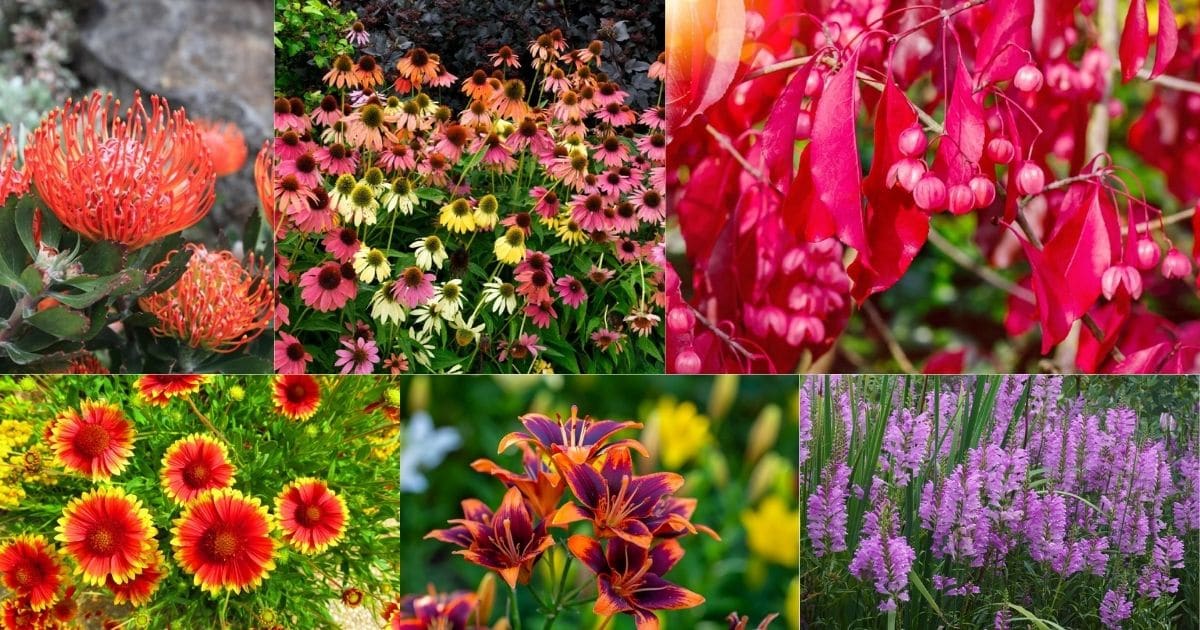
Doing an internet search of hardy perennials usually brings up the same tired lists of flowers and shrubs. This is a disservice to the variety that is available and possible. It's time to look past the hostas, daisies, peonies, and hydrangeas and explore all the other incredible plants that are waiting to light up your landscape.
What Makes A Perennial Hardy?
A hardy perennial will survive freezing temperatures and frozen grounds for a minimum of 3-4 years. Hardy perennials also do well in the sun, sometimes even full sun, depending on the climate.
Jump to:
- Top 20 Hardy Perennials
- Blazing Star (Liatris spicata)
- Foam Flower (Tiarella cordifolia)
- Goat's Beard (Astilbe x)
- Mountain Rock Cress (Arabis caucasica)
- Obedient Plant (Physostegia virginiana)
- Queen of the Prairie (Filipendula rubra)
- Lungwort (Pulmonaria)
- Basket of Gold (Alyssum saxatilis)
- Sticky Purple Geranium (Geranium viscosissimum)
- Coralberry (Symphoricarpos orbiculatus)
- Blanket Flower (Gaillardia x grandiflora)
- Daylilies (Hemerocallis)
- Leopard Plant (Ligularia x)
- Snowberry (Symphoricarpos albus)
- Coneflower (Echinacea purpurea)
- Eastern Wahoo (Euonymus atropurpureus)
- Globe Flower (Trollius europaeus)
- Black-Eyed Susan (Rudbeckia fulgida sp.)
- Oriental Poppy (Papaver orientalis)
- Pincushion Flower (Scabiosa)
To be classified as hardy, plants need to grow well in hardiness zone 3 and up. To find the best hardy plants for your climate, start with native perennials. After all, these plants have fought to survive in your area and are obviously successful. When we look for the best hardy plants for the garden and landscape, we always look local first.
Top 20 Hardy Perennials
Blazing Star (Liatris spicata)
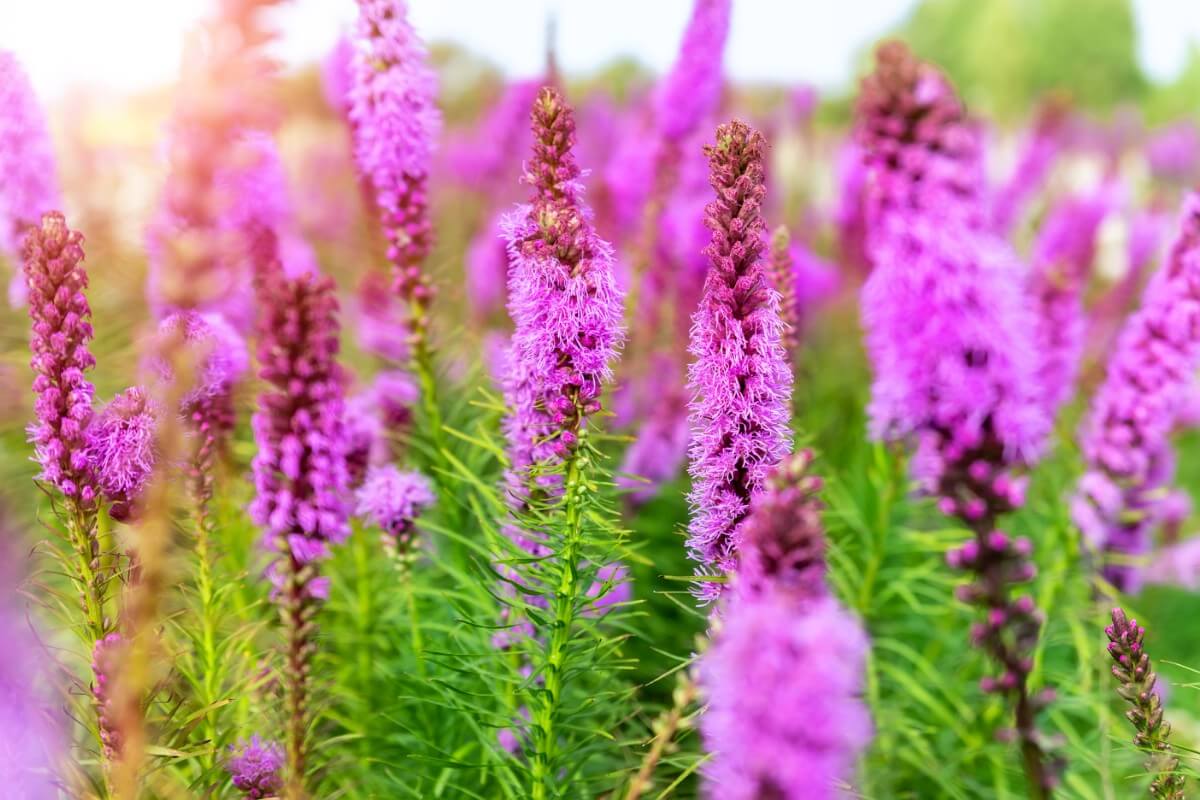
A native flower that takes hardiness seriously, Blazing Stars tolerate cold and freezing climates, drought, heat, and poor soil. It rarely suffers from diseases or pests, but best of all, it produces absolutely stunning, tall spikes of fluffy lavender flowers.
The individual flowers are small and star-shaped and bloom from the bottom up on spikes high above the grass-like foliage. Butterflies, hummingbirds, and native bees all love this native perennial, especially its long blooming season. Blazing Star provides a spectacular vertical aesthetic that often stops people in their tracks.
- Hardy to zones 3-9
- Full sun
- Deer resistant
Foam Flower (Tiarella cordifolia)
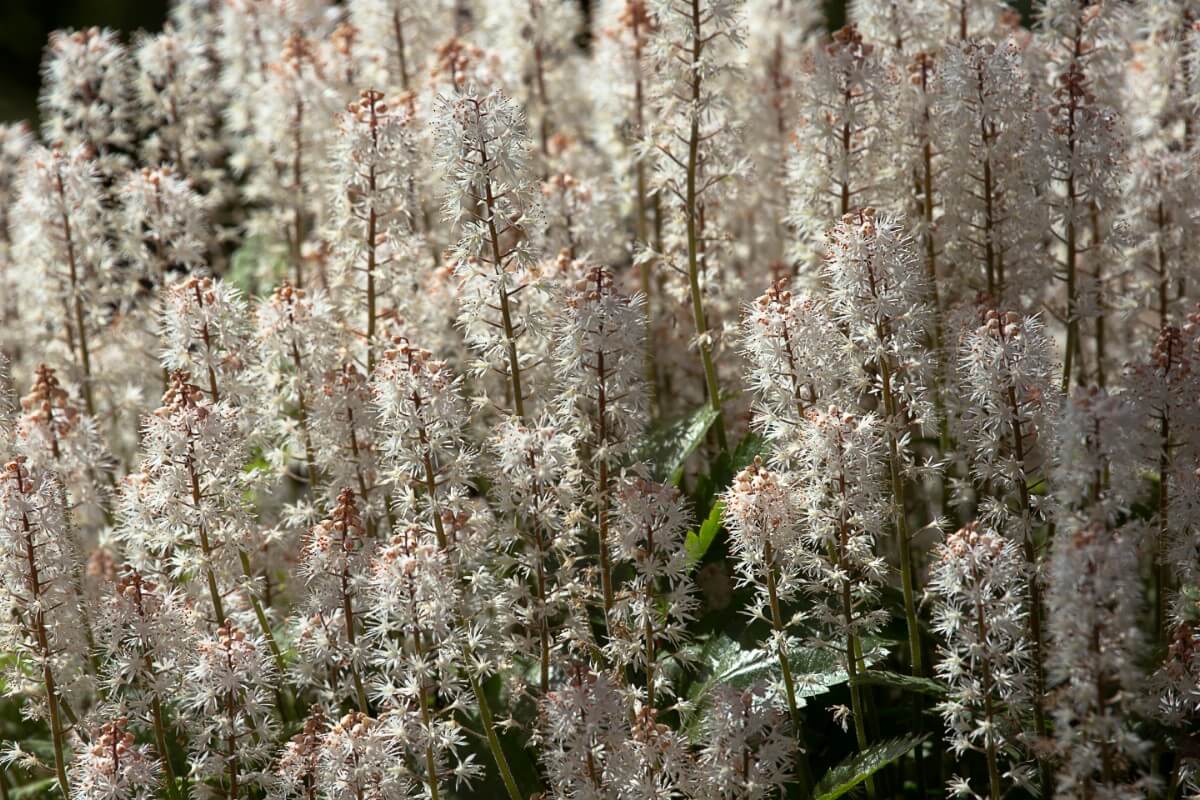
This native perennial is valued for its showy floral display, along with its enchanting heart-shaped leaves. Foamflower is always a top landscape choice because it is accustomed to harsh winter conditions, being a native to the Midwest and New England.
Small, elegant pure white flowers grow in rows along wand-like stems, giving the appearance of foam floating above the foliage. Foamflower blooms for 4-6 weeks so that you can enjoy this dreamy flower for a long time.
- Favorite Foamflower varieties: Sugar and Spice (pink flowers and purple streaked foliage), Crow Feather (white flowers, black-streaked foliage), Pink Skyrocket (pink flowers, purple marked foliage), Jeepers Creepers (white flowers, marked black foliage), Appalachian Trail (white flowers, burgundy marked foliage)
- Hardy to zones 3-8
- Partial or full shade
- Deer resistant
Goat's Beard (Astilbe x)
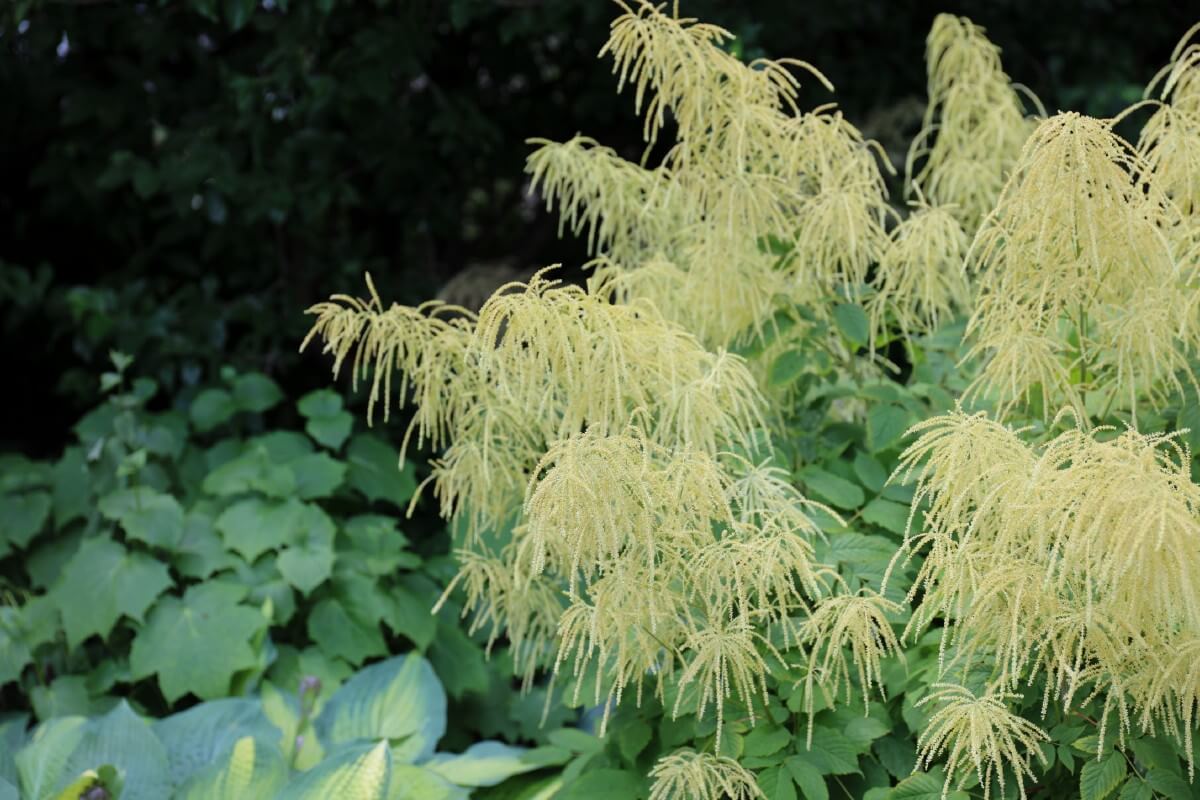
An extremely hardy perennial with gorgeous flower displays and a vast array of colors to choose from, Goat's Beard could easily be the only plant in the garden. The long, arching plumes of little flowers add elegance, grace, and height to the landscape. Goat's Beard blooms stay all summer long and attract butterflies and bees.
The foliage is fern-like and attractive in its own right, especially after changing color in the fall. The variety of Goat's Beard flowers is remarkable; there are dwarf, mid-size, and tall hybrids in colors including pink, white, purple, lavender, red, and bi-color.
- Favorite Goat's Beard varieties: Hip Hop (light pink/dark pink, compact), Fanal (crimson red. Compact), Diamond (white, mid-size), Sprite (soft pink, compact), Amethyst (lavender, tall)
- Hardy to zones 3-8
- Full shade, partial shade
- Deer and rabbit resistant
Mountain Rock Cress (Arabis caucasica)
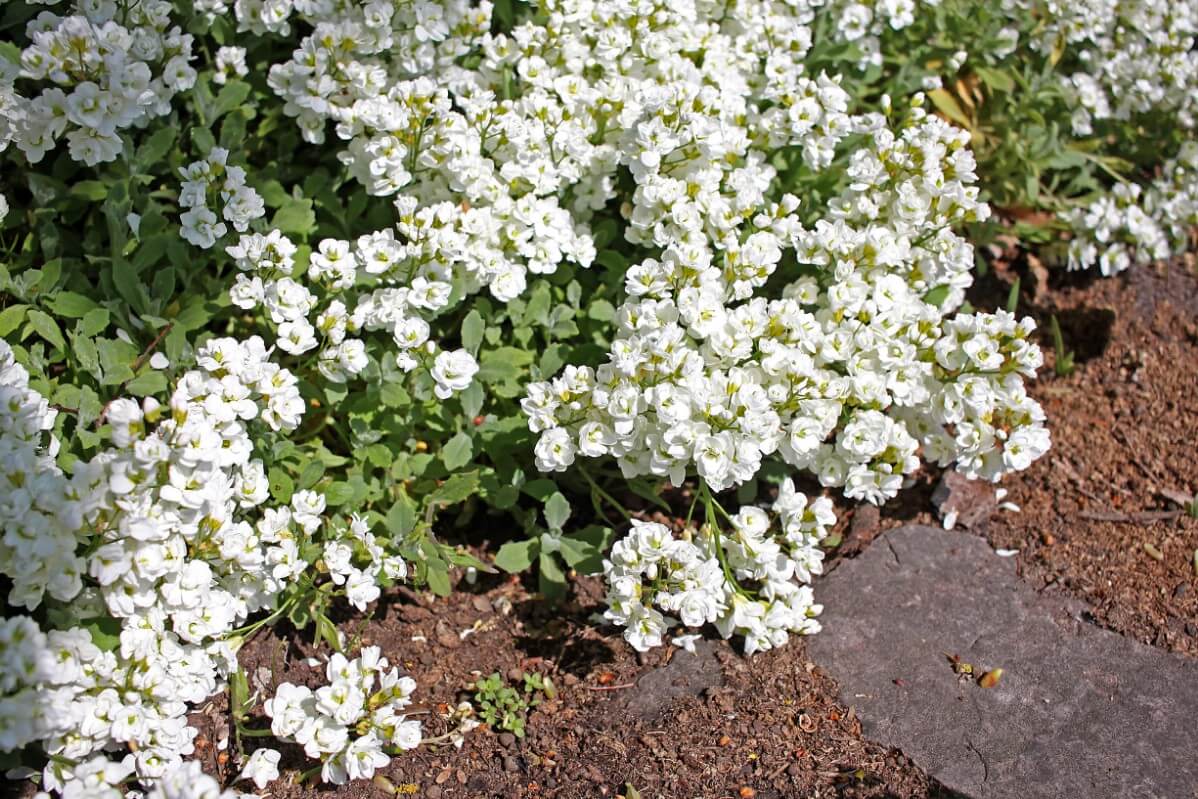
When this low-growing, mat-forming perennial blooms, the white flowers are so prolific that it almost looks like a layer of snow on the ground. Mountain Rock Cress is a spectacular hardy flower that never disappoints.
The blooms are wonderfully fragrant, butterflies adore it, it's easy to grow, and it's hardy to cold, drought, and heat. Mountain Rock Cress looks especially attractive planted between tall shrubs or trees or covering a rock wall. A native flower with impressive potential, Mountain Rock Cress is a no-brainer for a challenging climate.
- Hardy to zones 3-8
- Full sun or light shade
- Deer and rabbit resistant
Obedient Plant (Physostegia virginiana)
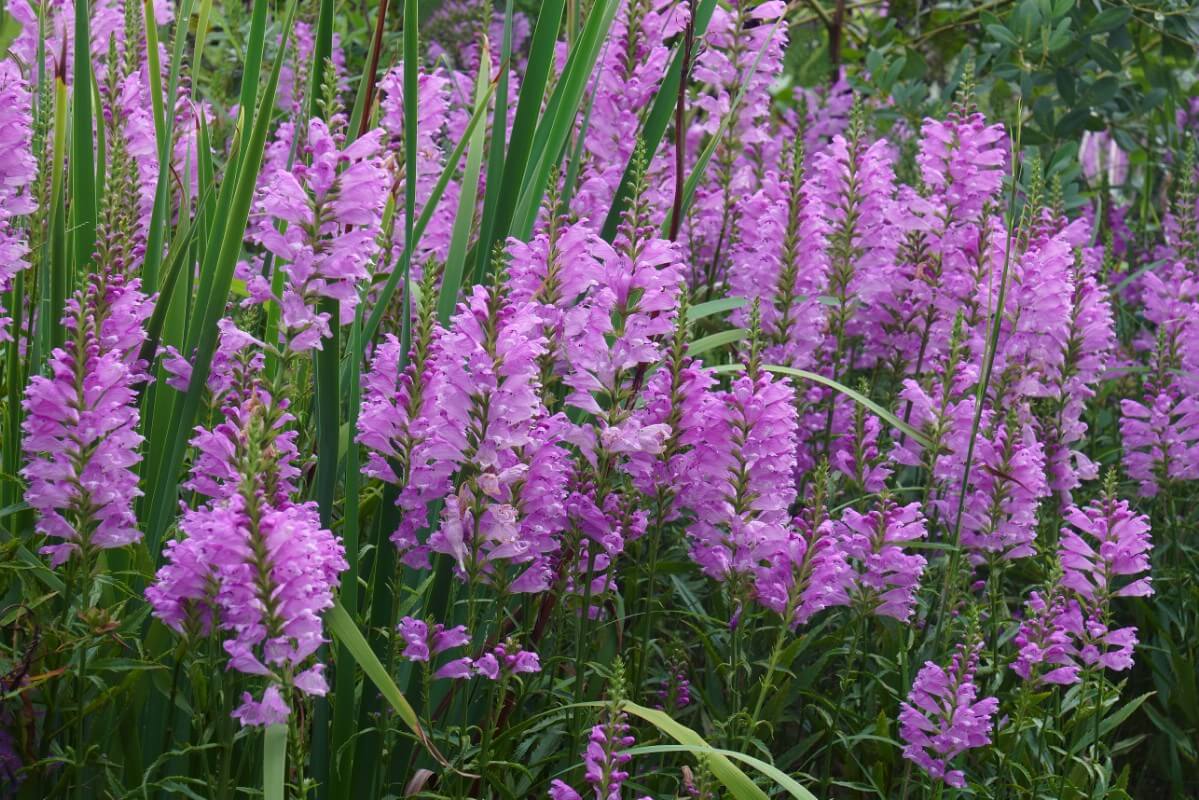
It may not listen to you, but Obedient Plant will produce a gorgeous array of pastel-colored flowers year after year. Native Obedient Plant has tall stems lined with tubular-shaped flowers from mid-summer through fall. Butterflies, bees, and hummingbirds all flock eagerly to the abundant blooms.
This hardy perennial grows 3-4 feet tall, and if not watched, it tends to colonize or even become invasive, so plant with care. It is a native plant, but it likes to be the main star wherever it grows, even in cold climates. Plant in a wild garden or meadow, or keep it carefully corralled in the landscape. It also grows wonderfully in a container.
- Favorite Obedient Plant varieties: Crown of Snow (pure white), Vivid (lilac purple), Rosea (light pink)
- Hardy to zones 3-9
- Full sun or light shade
- Deer resistant
Queen of the Prairie (Filipendula rubra)
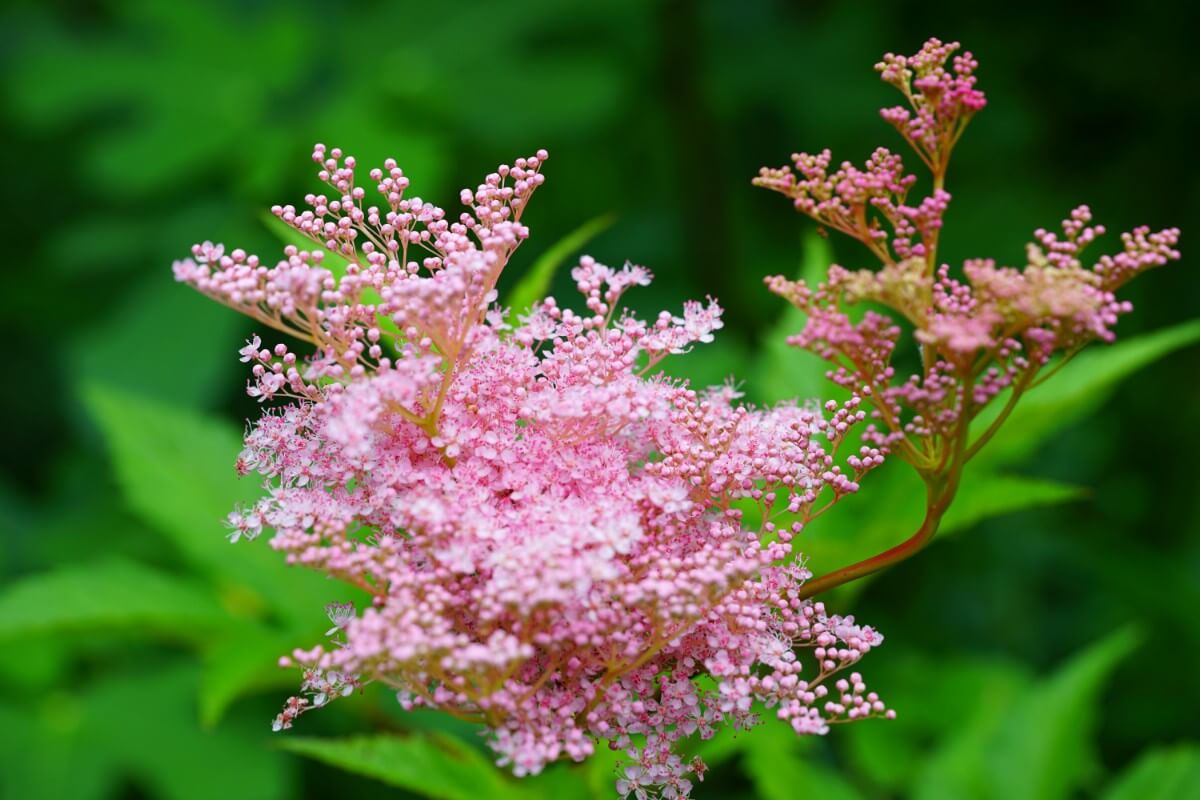
A hardy perennial with a flair for drama, Queen of the Prairie is royalty in the flower garden. This native flower grows 6-8 feet tall and produces big clustering puffs of tiny light pink flowers above the green foliage. In full bloom, Queen of the Prairie looks like hundreds of soft pink clouds floating in the landscape.
It loves forming colonies, so either plant Queen of the Prairie in a location where it can spread out or keep an eye on it so it doesn't take over. Beloved by pollinators, the native Queen of the Prairie is an excellent plant for wild gardens, naturalistic plantings, accents, and borders, or along creeks and ponds.
- Hardy to zones 3-9
- Full sun or partial shade
- Native to the Midwest, Southeast, and Northeast
Lungwort (Pulmonaria)
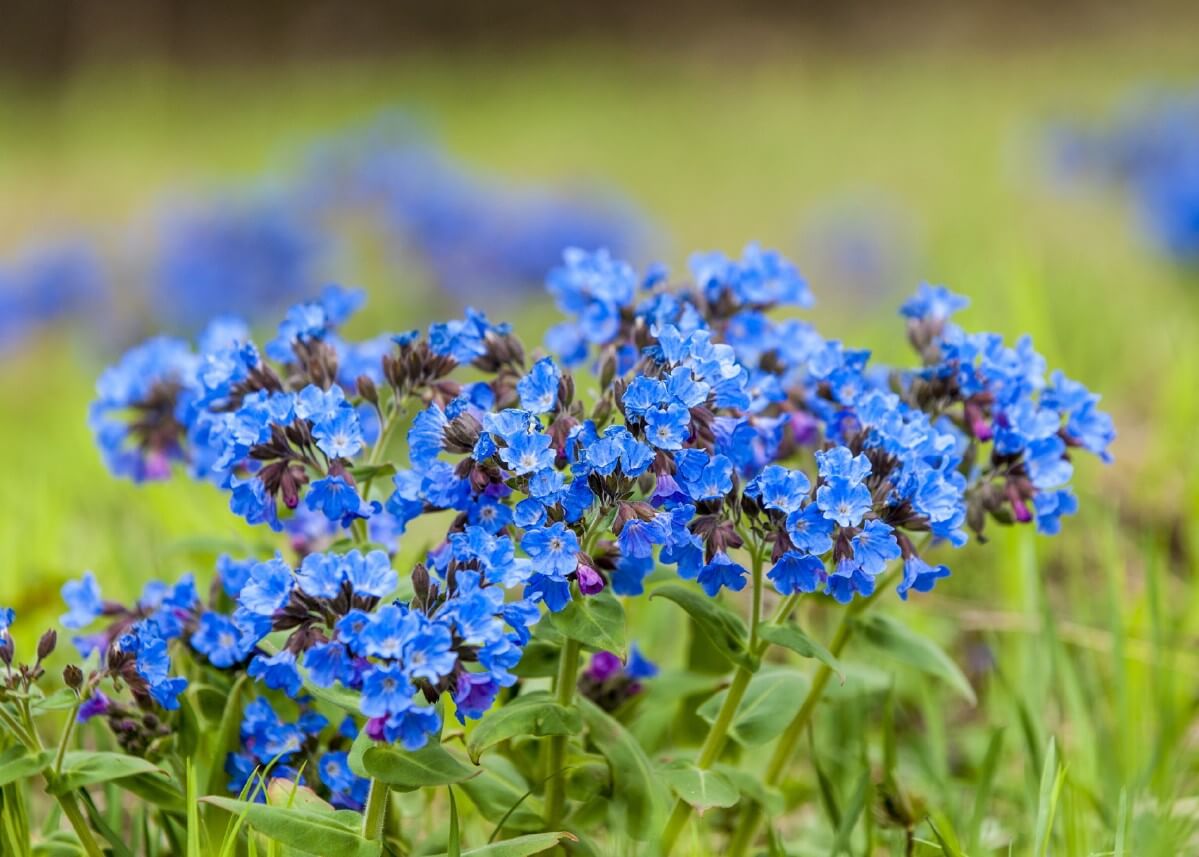
A shade-loving, hardy perennial, Lungwort adds color and interest to shady garden locations. The mottled foliage of Lungwort is as much the attraction as the flowers. Each leaf is spear-shaped with a mixture of green and silver markings. Depending on the type, the leaves range from mostly green with silver speckles to almost entirely silver with green markings. Lungwort foliage remains intriguing throughout the growing season, providing the perfect backdrop for the brightly colored bell-shaped flower clusters.
Lungwort is a short plant, averaging 9-12 inches tall. It is an excellent ground cover or filler plant, especially since it rarely needs maintenance. Some varieties feature single-colored flowers, while others are multi-colored. The flowers on these change color as they mature, creating a colorful palette as they transition.
- Favorite Lungwort varieties: Victorian Brooch (magenta flowers, green leaves with silver specks), Silver Bouquet (pink/violet flowers, silver foliage with green markings), Raspberry Splash (purple/pink flowers, green foliage with silver specks), Blue Ensign (blue flowers, all green foliage)
- Hardy to zones 3-9
- Full shade or partial shade
- Deer resistant
Basket of Gold (Alyssum saxatilis)
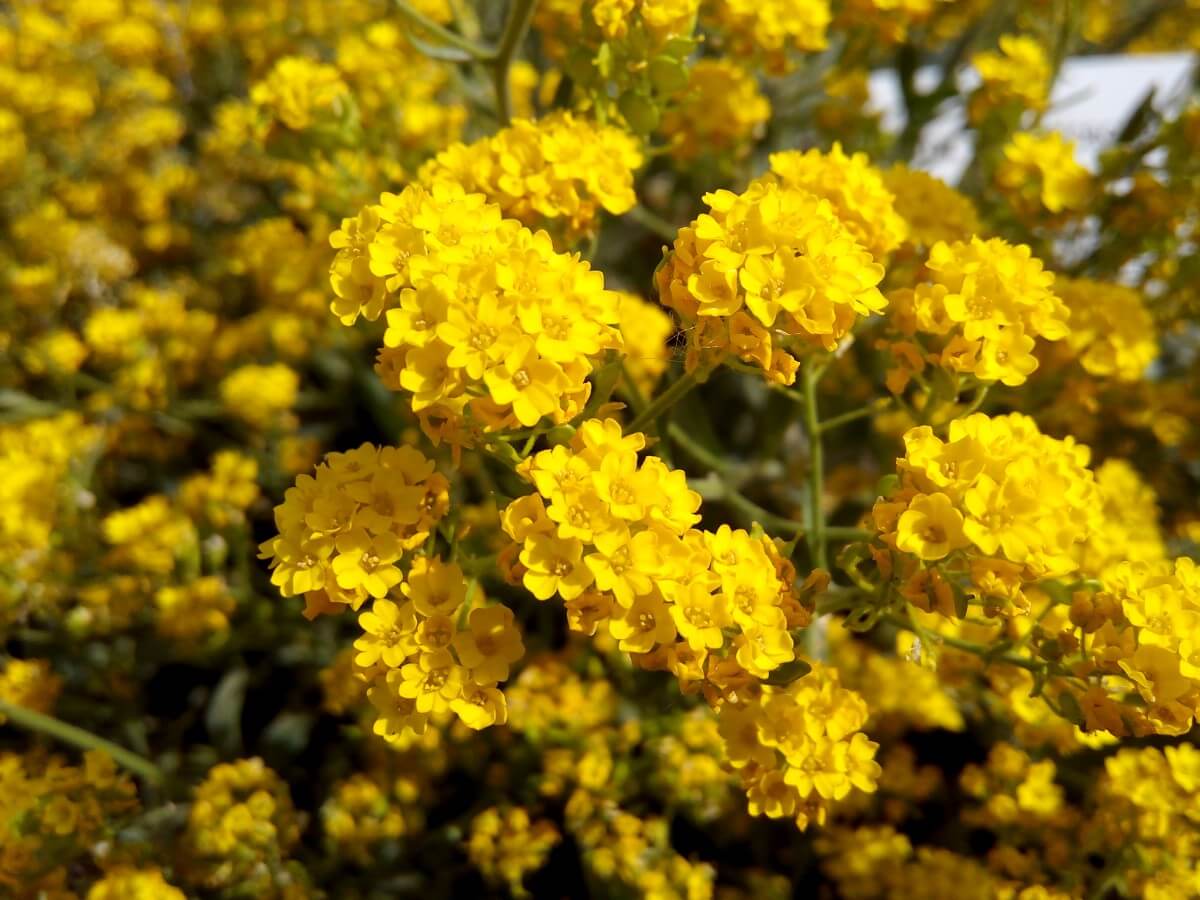
A small plant with a stunningly bright flower display, Basket of Gold lives up to its name. In spring, masses of brilliant golden-yellow flowers grow above the grayish-green foliage, creating a spectacle of color.
Basket of Gold is a low-lying plant, only growing 6-12 inches high. Bees, hummingbirds, and butterflies are drawn like magnets to the blooms. Basket of Gold is lovely in low borders, along walkways, cascading down walls, and as ground cover.
- Hardy to zones 3-7
- Full sun
- Deer resistant
Sticky Purple Geranium (Geranium viscosissimum)
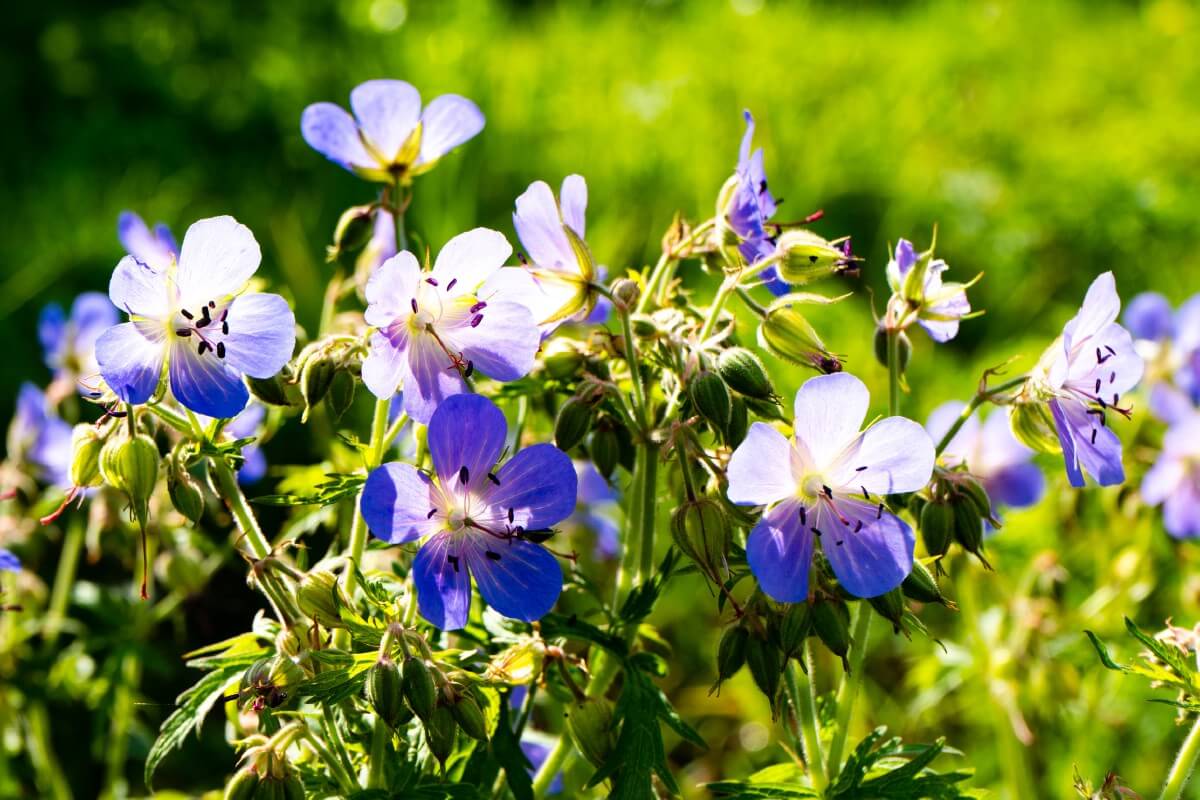
A long-blooming native perennial from the Midwest, Sticky Purple Geranium is a delight in the flower garden. The flowers are brilliant purple, saucer-shaped, and beloved by native bees and butterflies. Sticky Purple Geranium needs little care; it is drought resistant, cold-hardy, and rarely suffers from pests or disease.
In the landscape, it is an easy-going, graceful perennial that blooms from late spring through late summer. In addition to being a low-maintenance beauty, Sticky Purple Geranium flowers are also edible and are excellent as a salad garnish. This is a fantastic edible landscape plant!
- Hardy to zones 2-9
- Full sun or partial shade
- Another hardy native geranium worth growing, Spotted Cranesbill (G.maculatum), looks wonderful planted in meadows, rock gardens, flower beds, and wildflower gardens.
Coralberry (Symphoricarpos orbiculatus)
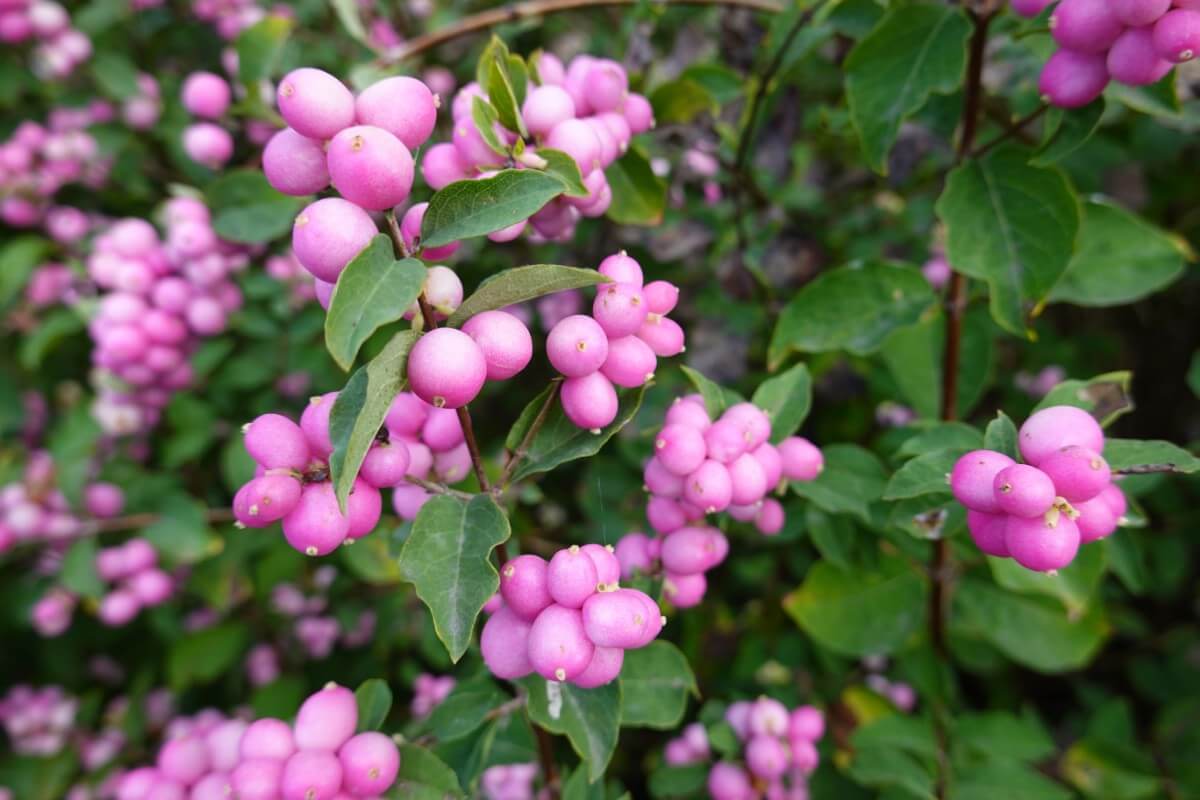
The flashy pink berries of the native Coralberry bush mature in the fall and stay fresh through the winter, providing an important food source for birds and small mammals. Besides being an important native food for the local wildlife, the brilliantly colored berries are welcome flashes of color in a dreary winter landscape. Coralberry foliage is dense and an attractive deep green. The flowers are tiny and cute but not that noticeable.
This hardy perennial practically thrives on neglect, so you can plant it and forget it. It does tend to colonize areas, so keep an eye on it if you want it contained. It is ideal as an informal hedge used to stabilize slopes, or grown with other shrubs as a border plant.
- Hardy to zones 2-7
- Full sun or partial shade, full shade okay
- Deer resistant
- Tolerates drought, poor soil, and pollution
- Native to the midwest, northeast, southeast, and southwest
Blanket Flower (Gaillardia x grandiflora)
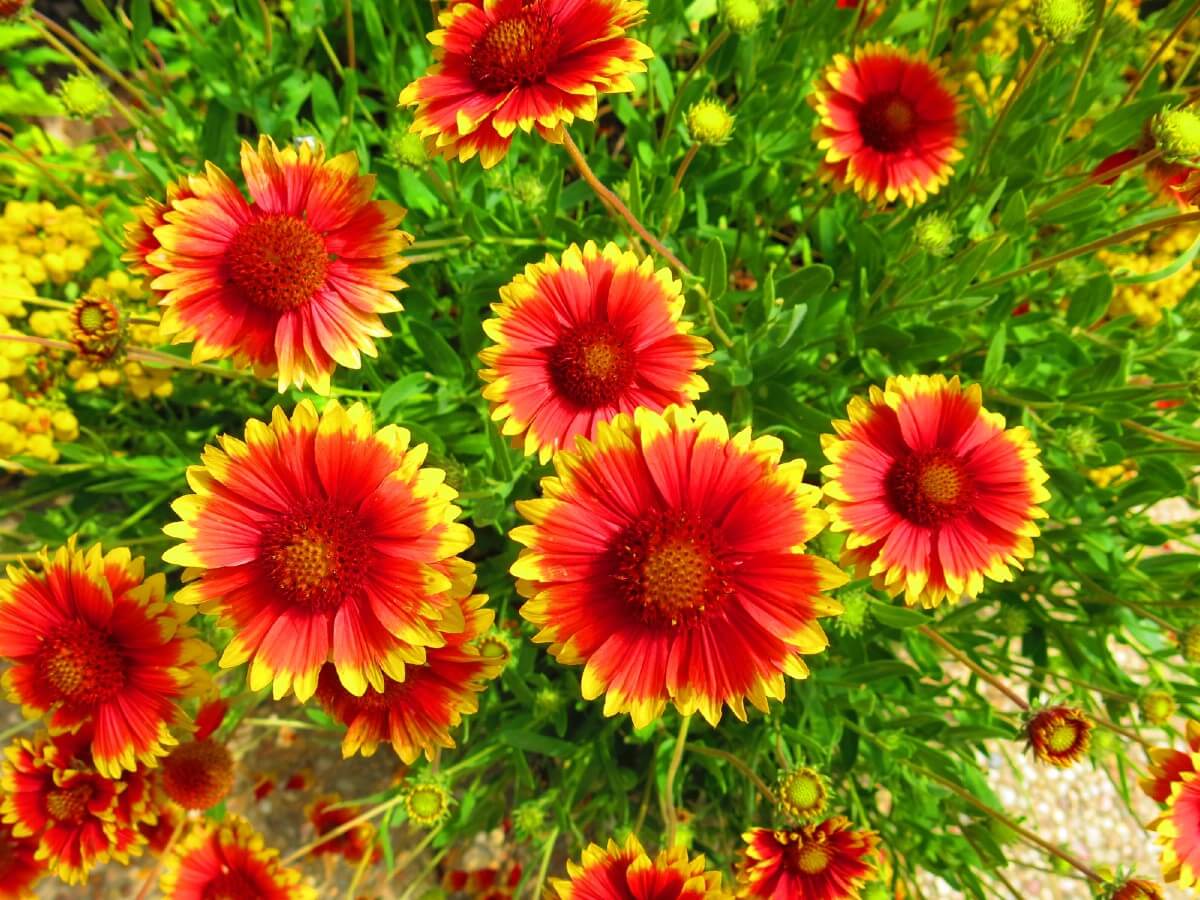
Very few things outshine the bright and cheerful Blanket Flower. This tough native perennial flower bursts with colors that lift the spirits and brighten up the day. Blanket Flowers look like multi-colored pinwheels dancing in the landscape and are especially enchanting when planted in large groupings. Hummingbirds and butterflies can't resist and enjoy visiting the blooms from early summer through fall.
Most hybrids are a combination of reds, yellows, oranges, gold, and burgundy. Blanket Flowers also come in single, double, and semi-double varieties.
- Favorite Blanket Flower varieties: Mesa Bright Bicolor (yellow/red), Sun Devil (red/yellow, pinwheel form), Sunset Mexican (yellow/pink), Sunset Spice (orange/yellow), Arizona Apricot (peach/yellow)
- Hardy to zones 2-10 (varies slightly)
- Full sun
- Deer resistant
Daylilies (Hemerocallis)
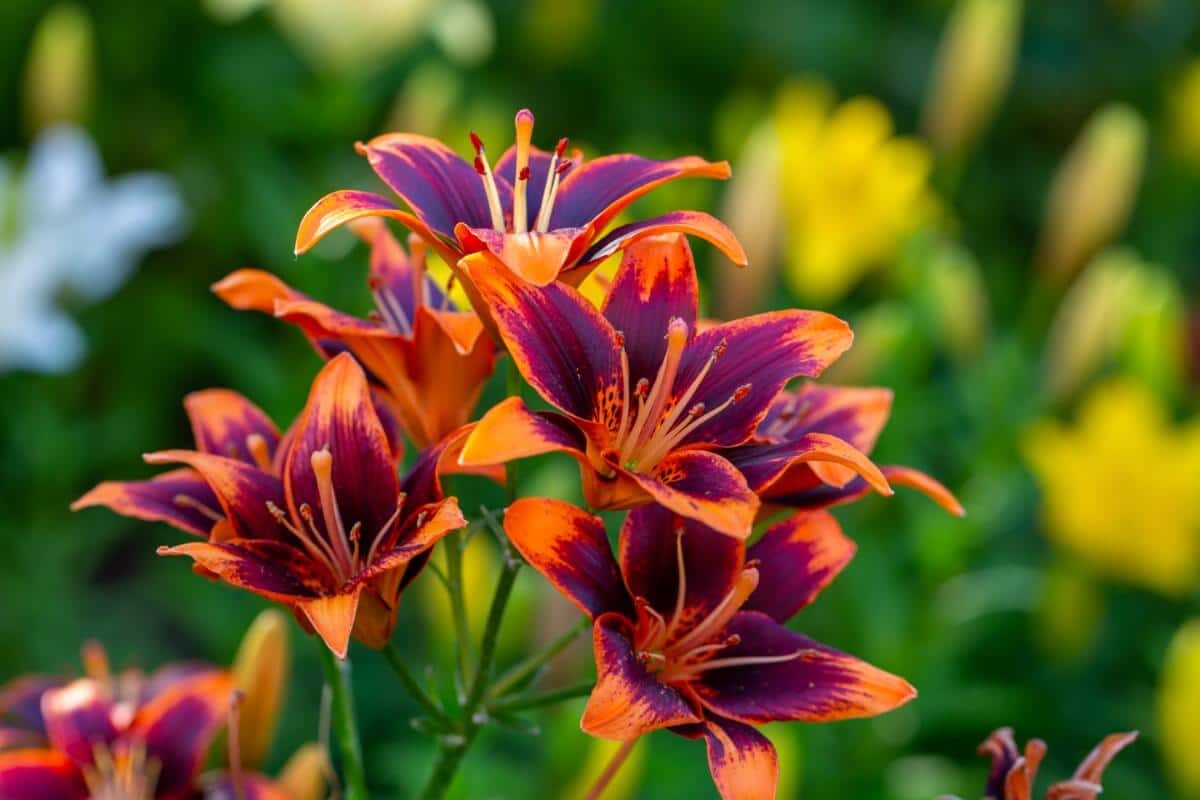
A garden isn't complete without at least a few daylilies. And, thankfully, with over 50,000 registered cultivars(!), all featuring vibrant colors and showy blooms, it isn't difficult at all to choose a few. Or, to fill the entire garden just with daylilies! Daylilies are one of the hardiest flowers, rarely suffering from drought or heat while easily surviving freezing temperatures and frozen grounds. Many folks call this the "perfect perennial," and we absolutely agree.
- Favorite Daylily varieties: Awesome Blossom (apricot/plum), Rocket City (tangerine/golden), Ming Toy (red/yellow), Wineberry Candy (pink/purple/yellow), Advanced Party (lavender/lime green), Moonlit Masquerade (cream/purple), American Revolution (dark purple/yellow)
- Hardy zones 3-9
- Full sun or light shade
- Deer resistant
Leopard Plant (Ligularia x)
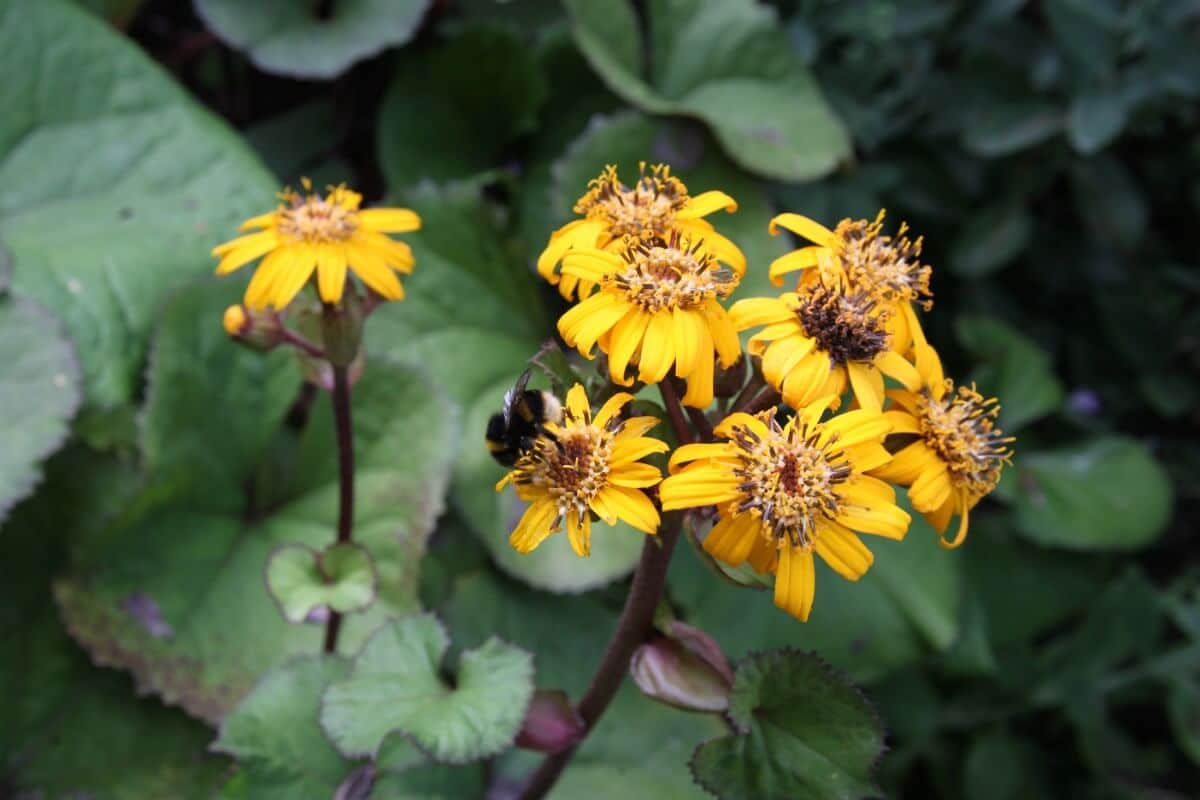
Showcasing a spectacular foliage and flower display, Leopard Plant is a stunner in the flower garden. The leaves are massive, dark-green, deeply serrated, and grow in giant mounds. When in bloom, tall stems rise up from the center of the mounded leaves with hundreds of small, daisy-like bright yellow flowers lining them.
Leopard Plant is bold, hardy, and undaunted by cold weather. Even when not in bloom, Leopard Plant foliage creates an intriguing backdrop for other perennials and flowers.
- Hardy to zones 3-8
- Full sun or partial shade
Snowberry (Symphoricarpos albus)

In early fall, this native perennial shrub produces abundant clusters of bright snow-white waxy berries that the birds and small animals adore. Snowberry fruit stays on the bush well into winter, providing an important food source for the local wildlife and an attractive, interesting plant in the landscape when little else is even alive.
Snowberry flowers are sweet looking yet inconspicuous; the pollinators love them, though, and will appear in great numbers to gather nectar. The foliage is an interesting blue-green and dense during the growing season. Low maintenance and extremely hardy, Snowberry looks best planted as hedges, borders, or used to as natural erosion control.
- Hardy to zones 3-7
- Full sun, partial shade, or full shade
- Drought tolerant and grows in a wide range of soil types
- Native to the Midwest, Southwest, New England, Pacific Northwest
Coneflower (Echinacea purpurea)
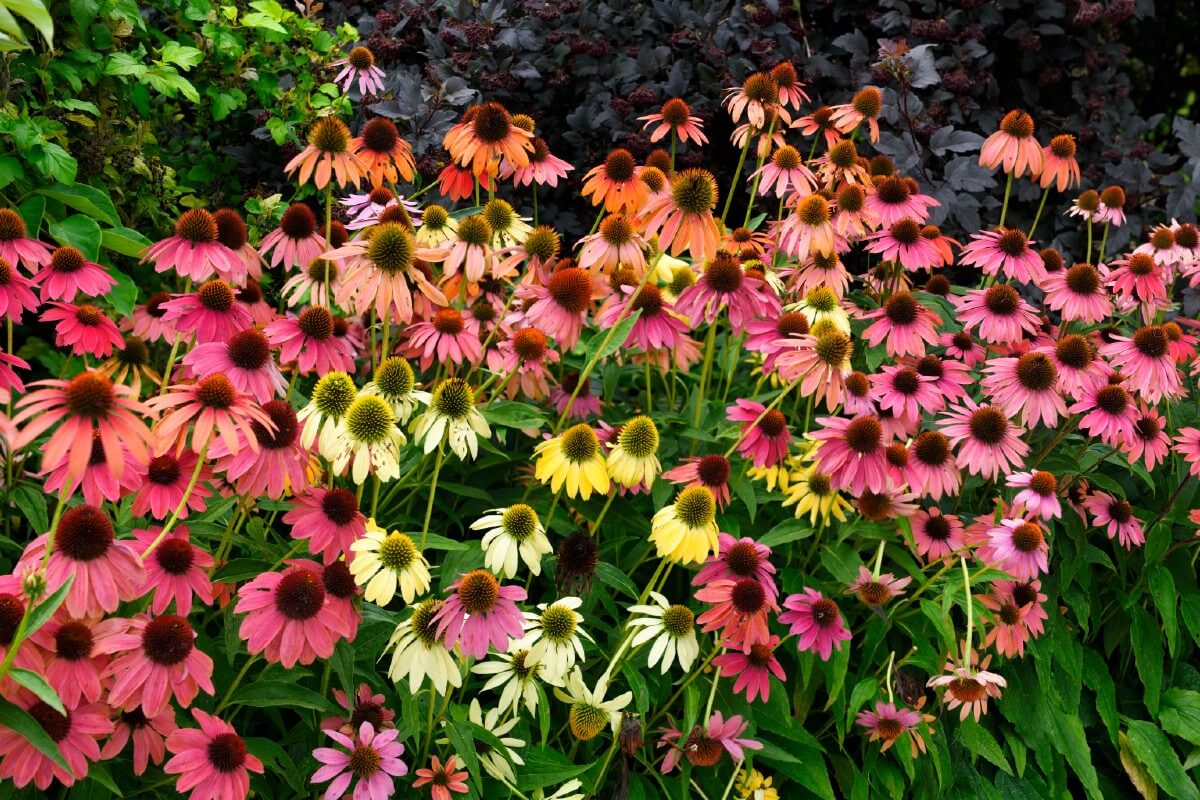
The ultimate hardy perennial, there is little that will defeat Coneflowers. Coneflower is tolerant of heat, humidity, drought, and poor soil. Butterflies, bees, and hummingbirds love the flowers, and deer won't mess with them. In addition to being stunningly low-maintenance plants, Coneflowers also bloom all summer long, providing a long season of color. Many types are fragrant, too, adding more reason to plant this native perennial.
There are hundreds of Coneflower cultivars to choose from, in addition to the classic purple one. Blooms range in color from orange, red, yellow, pink, white, peach, and lavender. You could easily fill your landscape with just Coneflowers, and it would look amazing and be extremely hardy.
- Hardy to zones 3-9
- Full sun or very light shade
- Deer and rabbit resistant
- Native to the northeast and southeast
Eastern Wahoo (Euonymus atropurpureus)
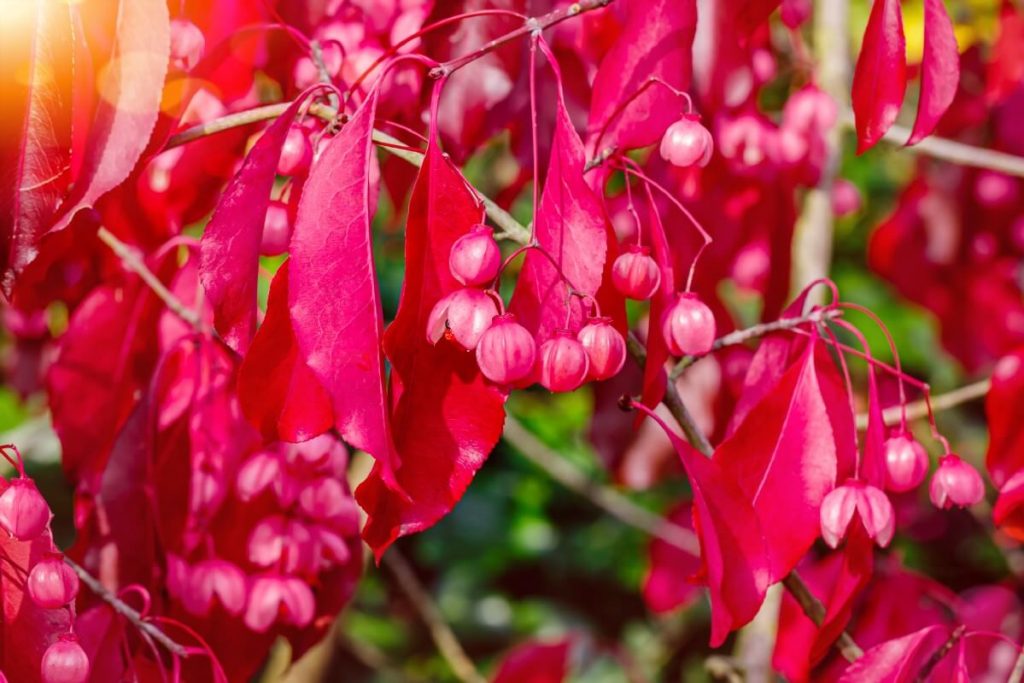
This quirkily named bush is a hardy native that provides bold splashes of color throughout the seasons. Plant Eastern Wahoo instead of the invasive Burning Bush (E. alatus), and you won't be disappointed. In late spring, this tall shrub or small tree produces prolific little maroon flowers which stay for a month. After the flowers fade, light purple seed capsules form and fill the branches. In fall, the seed capsules burst to reveal crimson-red berries, which birds adore.
Eastern Wahoo foliage also changes through the seasons, starting out lime-green then changing to brilliant red in the fall. It is less flashy than Burning Bush but still extremely attractive. Rarely suffering from disease and thriving in a large host of challenging conditions, Eastern Wahoo is a sure bet for the hardy landscape.
- Hardy to zones 3-7
- Full sun, partial shade, or full shade
- Native to the Midwest, Southwest, and Northeast
Globe Flower (Trollius europaeus)
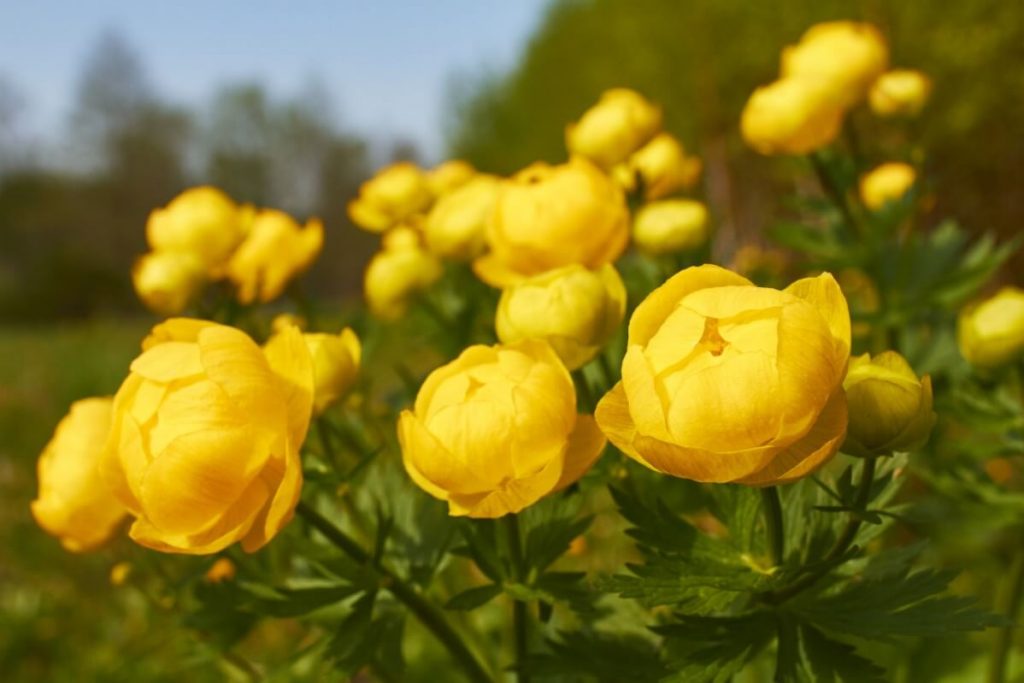
It's hard to be sad around these huge golden-yellow buttercup-like flowers. Globe Flowers are sunshine impersonated, with blooms that grow on 3-foot tall stalks above the dark green foliage. Hummingbirds and butterflies are drawn like magnets to the brilliant splashes of color, making this fuss-free hardy perennial even more remarkable in the flower garden. Globe Flower looks especially striking planted in large groupings or used along borders and walkways.
- Hardy to zones 3-8
- Full sun or light shade
- Deer and rabbit resistant
Black-Eyed Susan (Rudbeckia fulgida sp.)

A classic hardy perennial, no garden truly is complete without a few Black-Eyed Susan plants. The brilliant and bright golden-yellow daisy-shaped flowers atop tall stems beam happiness into the landscape for months throughout the summer into fall. Black-Eyed Susans bloom prolifically and look absolutely stunning planted in large groupings.
This is the ideal hardy plant for borders, wild gardens, or meadows. Butterflies and bees can't resist the flowers, while deer and rabbits avoid them. Black-Eyed Susans are wonderfully low-maintenance and rarely suffer from disease.
- Hardy to zones 3-8. There are many species of Black-Eyed Susans; not all are hardy down to zone 3. Be sure to double-check the species before acquiring.
- Full sun, or very light shade
- Drought tolerant, deer and rabbit resistant
Oriental Poppy (Papaver orientalis)
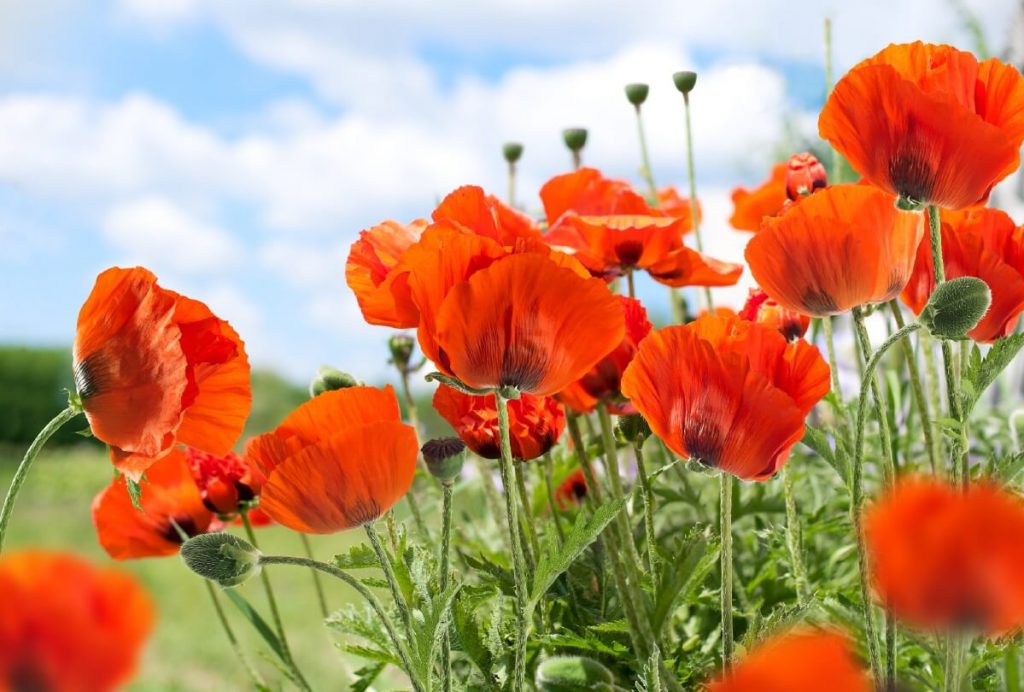
Vividly colored Oriental Poppies must be planted where they are easily admired by all who pass by. These ultra-hardy perennial flowers are bold and carefree in the garden. With hundreds of colors to choose from, it is hard to go wrong with this landscape charmer.
Oriental Poppy flowers look like they are made from crepe paper and bloom for months in the summer. Even after they've stopped blooming, they are attractive with uniquely shaped seedpods that look like they came from another planet.
- Favorite Oriental Poppy varieties: Patty's Plum (plum purple), Prinzessin Victoria Louise (light pink), Eye Catcher (burnt orange), Fancy Feathers (pink, frilled), Harlem (burgundy), Helen Elizabeth (light peach), Lauren's Grape (deep purple), Prince of Orange (tangerine orange), Perry's White (white/purple)
- Hardy to zones 3-8
- Full sun
- Deer and rabbit resistant
Pincushion Flower (Scabiosa)

This accurately named late-spring bloomer is hardy, trouble-free, and beautiful. Pincushion Flower blooms start in late spring and keep blooming straight through fall. The flowers are dense and pastel-colored, with multiple upright stamens that look like dozens of pins stuck into the fluffy centers.
Pincushion Flowers are low-growers, averaging 12-18 inches tall, and the flowers grow on top of wiry stems above the mounded grayish-green leaves. Butterflies, in particular, are attracted to these pretty and abundant flowers.
- Hardy to zones 3-9
- Full sun or partial shade
- Drought tolerant, deer resistant

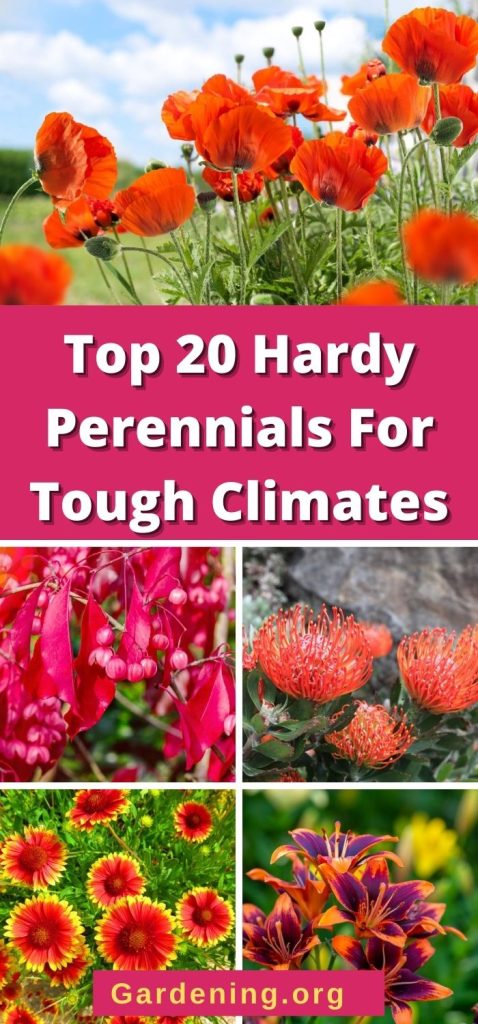
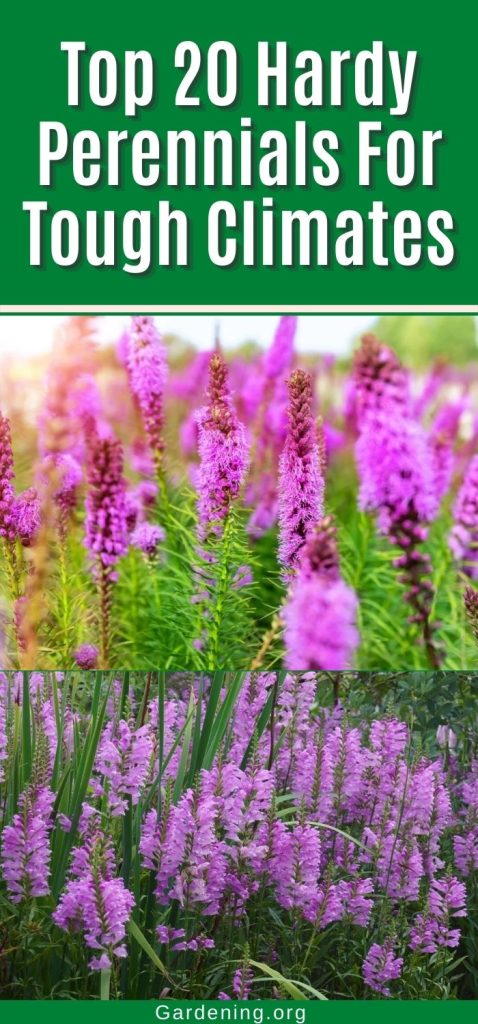
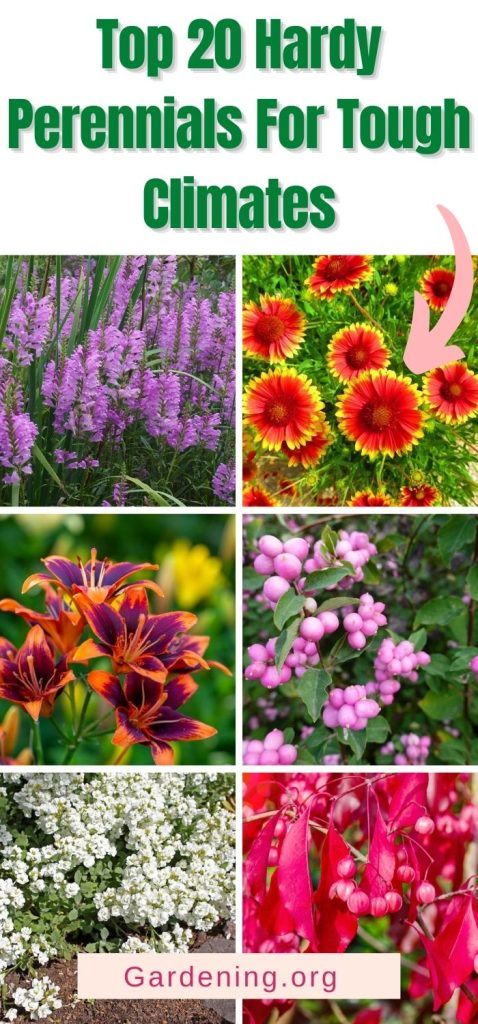
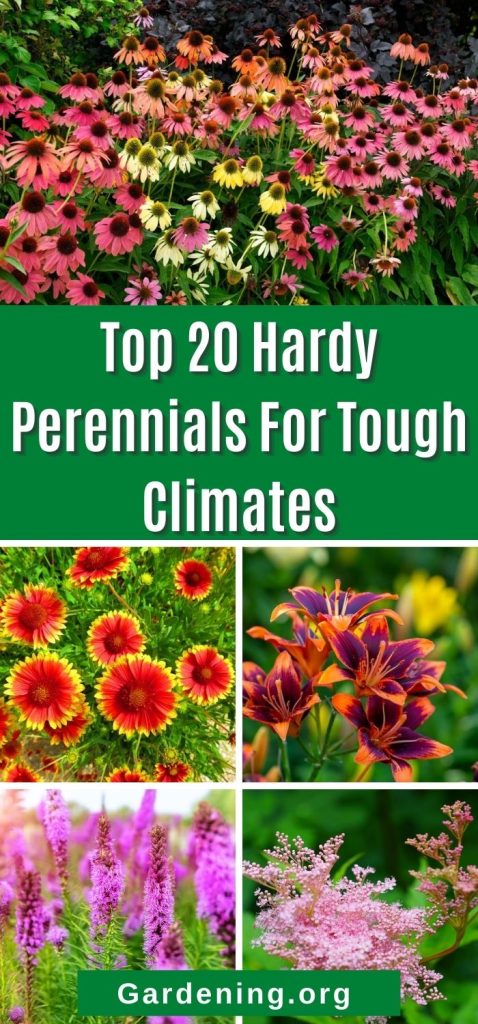
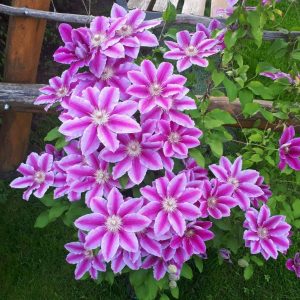
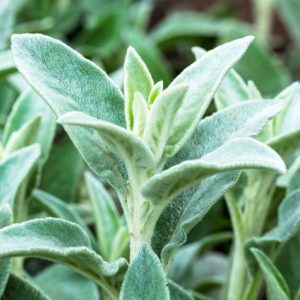
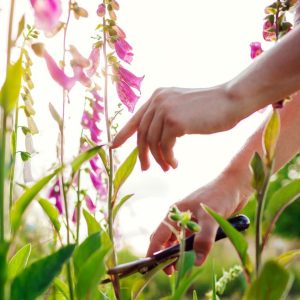
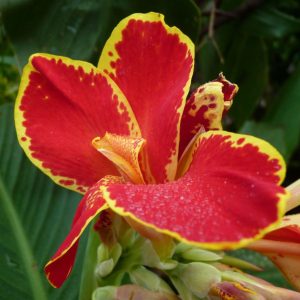
Mary McNeill
I LOVE ALL THE LESSONS I'VE GOTTEN FROM YOU. EXTREMELY HELPFULL.
Brian Carter
In your Top 20 Hardy Perennials For Tough Climates you list Pincushion Flower (Scabiosa), which has flowers usually in shades of mauve, and is a short-lived perennial or biennial. The photo shown, I think, however is of a different plant, also known as pincushion flower, but in the genus Leucospermum, and is more shrubby and best in warmer climates. Please check the photo with this listing. Thank you.